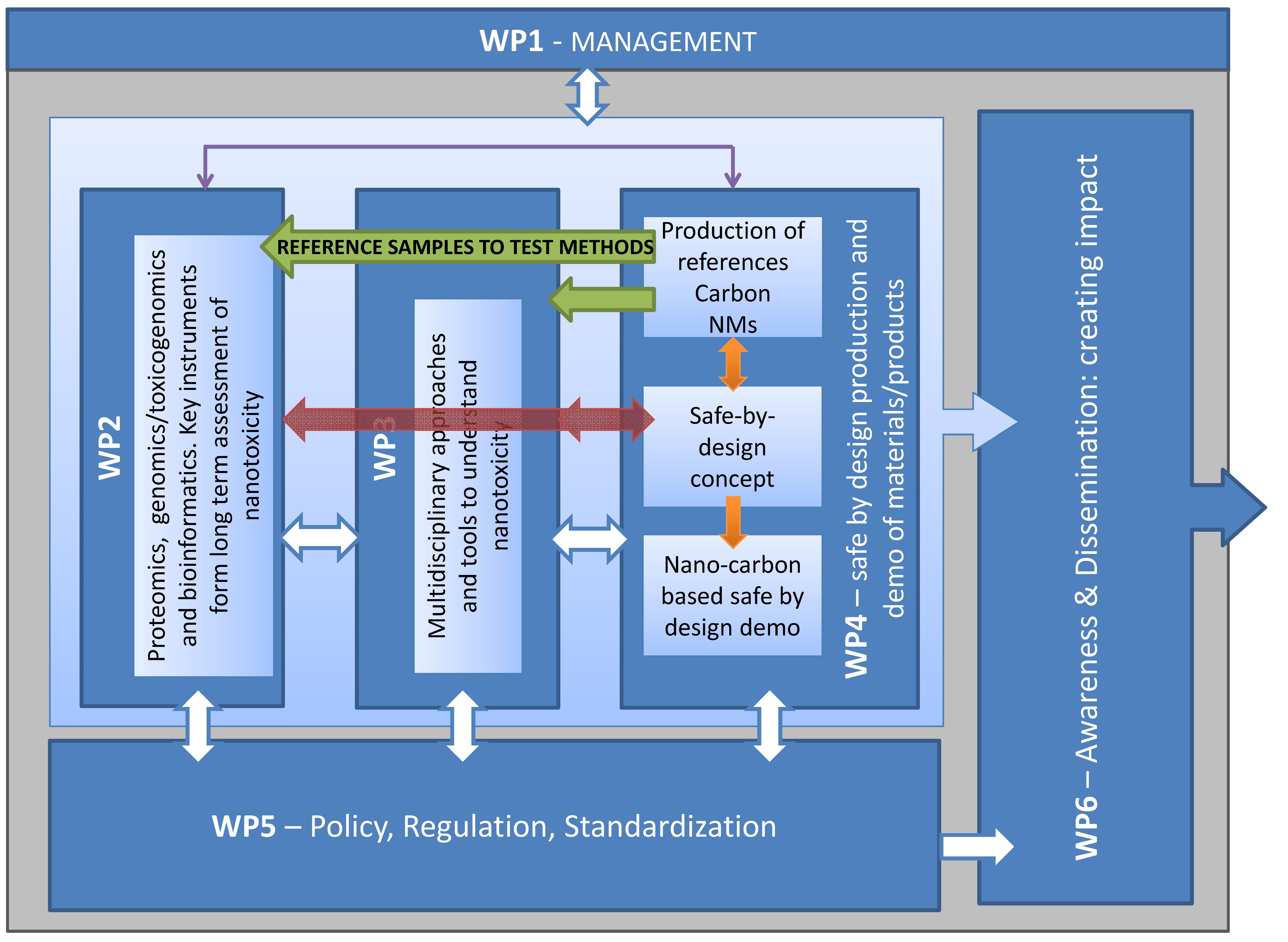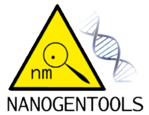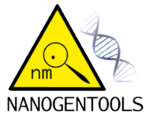NANOGENTOOLS Project
Aimed at developing new methodologies for the identification and control of hazards associated with nanomaterials, ensuring consumer and Society safety. It pursues the main objective of generating a common solid knowledge basis arising from the fruitful cross-sectorial synergy between forefront research Centers in nanosafety and industry, in a cross-fertilization multidisciplinary approach that will provide new tests and methodologies (or improve existing ones) to assess the long term risks of nanomaterials (NMs) in a rapid and cost effective manner suitable for regulatory inclusion.
NANOGENTOOLS combines genomics (toxicogenomics), proteomics and multidisciplinary science (biophysics, molecular modelling, chemistry, bioinformatics, chemoinformatics) to develop fast in vitro high throughput (HTS) assays, with molecular based computational models for better understanding of the molecular fundamentals of nanotoxicity, and it will initiate the development of online nanosafety assays for use by SMEs during product development.
NANOGENTOOLS
The expected impacts include pre-validated tools for efficient cost-effective nanosafety assessment applicable to SMEs and suitable for incorporation into regulatory frameworks, and translation of the knowledge into a demonstration of the application of safety-by-design principles for the development of a CNT-based nanosensor.
The specific objectives of our project are:
Project general concept

Working Packages (WPs)
The tasks defined in this project are organized in 6 Working Package. Each one will have a designed partner responsible or "WP Leader":
WP1: Project management & coordination. WP Leader: ICCRAM - UBU
Description: To implement an adequate management process, in order to ensure the successful delivery of the NANOGENTOOLS project in terms of knowledge transfer and scientific development.
WP2: Proteomics, genomics/toxicogenomics and bioinformatics. Key instruments for long term assessment of nanotoxicity. WP Leader: UPO.
Description: WP2 focuses on exchange knowledge and training in -omic tests as a future fast screening tool to provide long term toxicity assessment and enhanced understanding of effects of NMs on health.
WP3: Multidisciplinary approaches and tools to understand nanotoxicity. WP Leader: UoB.
Description: WP3 focuses on the innovation of multidisciplinary techniques, tests and methodologies as tools and vehicle to predict the effects of NMs on health through a deep understanding of the biophysical and physicochemical mechanisms underlying nanotoxicity. Moreover new forefront visualization techniques for NMs distribution will be developed and improved by new censoring devices. This approach will be complemented with computational models capable of predicting molecular interactions, including mechanistic molecular dynamics simulation of the interaction of carbon NMs with model cell membranes.
WP4: Safe by design production and demo of nanomaterials/products. WP Leader: S45.
Description: This WP4 will carry out a truly multidisciplinary cross-sectorial activity that will directly interlink with the WPs 2 & 3. On one hand, it will focus in the production of carbon-based NMs to be used as a reference within the process of validation of the new tools explored (WP2 & 3). Additionally training and research in new methods to achieve the understanding and management, and implementation of the concept of ‘safe by design’ will be conducted. Finally, a demo on the safe design of NMs and products for sensors devices based on CNTs will be developed.
WP5: Policy developments, regulation and standardization. WP Leader: NIA
Description: In the valorisation plan, efforts will be made to achieve the best use of the results from the project and to optimize the transfer of results and knowledge to the interested parties, and EU industry. The policy activities will be based on counselling decision makers and policymakers around the new generation of nanosafety assessment tools and the novel concepts developed under this project, and their possible use as standard reference.
The plan will be designed and specifically addressed to SMEs and measures taken to bring the conclusions to this group of industries as a fundamental part of European producers of nanomaterials and their applications.
WP6: Awareness & Dissemination: creating impact. WP Leader: ICCRAM - UBU.
Description:
In the communication plan, efforts will aim to achieve best use of project results and to optimize interaction with the public, including interested parties as a complement to WP5. The dissemination strategy will be based on:
- Diffusion of knowledge through the mobility actions between researchers from the partners teams
- Dissemination via print and electronic media: project’s web site, newspapers articles, newsletters, etc.
- Implementation and maintenance of the website.
- Participation and Organization of Workshops and Technical Meetings during the project life.
- Development, organisation and recording of SME-orientated webinars and the MOOC.
The project will also use social media, moderate forum/discussion groups, in different subjects of nanosafety assessment for SMEs linked to training-discussion activities (e.g. LinkedIn groups), as well as webinars and video streams to deliver training and outreach.

